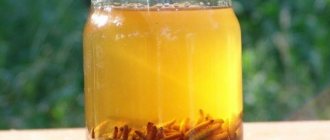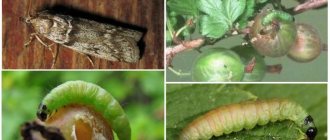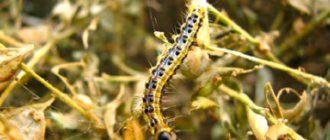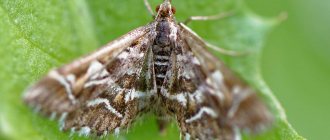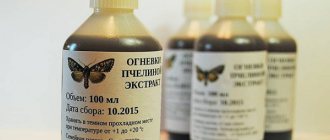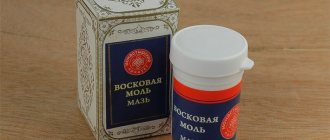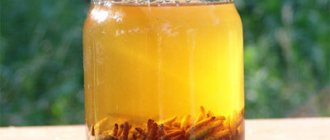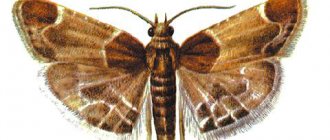The moth is a large family that includes more than 6 thousand species of insects. Among them there are also very small ones, but at the same time they turn out to be very serious pests of stocks, and real giants - butterflies with a wingspan of about 8.5 cm. Today we will get acquainted with representatives of the most common species. Some of them are quite curious, since, along with their harmfulness, they can bring significant benefits to humans.
Description
An adult moth is a small or medium-sized butterfly with a wingspan from 1.1 to 8.5 cm, which will depend on the species of the insect. Sexually mature individuals have a thin body and relatively long legs.
On the head of the butterfly there is a pair of clearly visible, somewhat bulging eyes and antennae. In females the latter are thread-like, in males they may bear cilia. The oral organ is represented by a sucking proboscis. At this stage of development it is usually underdeveloped; in some species it can be very short or completely absent.
Wings: the front wings are narrow and elongated or triangular in shape, they may have a median cell or several veins; the hind ones are wide, in most species they have a rounded shape and a short fringe along the edge. In females of some species, wings are rudimentary.
Most moth butterflies prefer to lead a crepuscular and nocturnal lifestyle. Representatives of these species are painted predominantly in dark colors, with gray as the main color. But there are also those that fly during the day - their colors are motley and bright. Insects at this stage of development, due to the fact that the oral organ and digestive system are underdeveloped, do not feed.
This is interesting! There are species whose habitat is high mountain areas. Such butterflies fly out even when the snow lies in a rather dense layer!
Caterpillar
Moth larvae are small caterpillars with 8, less often 7, pairs of legs. The head is small, small, naked, shiny. The caterpillar's body is covered with dark warts from which short bristles grow.
It is the larvae that are harmful. They can feed on leaves and buds of plants, berries, grains, dried fruits, etc. Caterpillars can live in the ground - in the root system of cereals, as well as in the pods of legumes, in the stems and young shoots of some plants and in places where food supplies are stored.
Medicinal properties of wax moth larvae
Recently, articles have appeared on the Internet claiming that wax moth products are a placebo, since there is no scientific justification or evidence of their effectiveness. Articles with such statements were written by incompetent people or out of ignorance (for example, on Wikipedia), or for the purpose of promotion in search engine results (for example, on a group of affiliated satellite sites about the control of domestic insects) and have nothing to do with real information about scientific research on medicinal products made from wax moth larvae do not have the properties and effectiveness of use.
The healing properties of wax moth larvae were known in ancient Asian countries and Egypt. In Russian folk medicine, from ancient times they were used to prepare remedies for the treatment of age-related changes and tuberculosis.
The first scientific studies of wax moth larvae date back to the end of the 19th century. The Russian scientist Nobel Prize winner I. I. Mechnikov drew attention to the ability of a folk remedy to cure tuberculosis. It was Mechnikov who first suggested that the larvae of bee moths (Galleria mellonella) may contain substances capable of lysing (destroying) the waxy membranes of tuberculosis bacteria.
Life cycle
Butterfly flights are usually observed twice a year - in May and June. Representatives of species living in the southern regions of Russia can fly three times - the last time occurs around August. At this time, females lay eggs, leaving a couple of eggs at a time on the lower surfaces of the leaves of wild and cultivated plants. The fertility of one female is about 100 eggs.
Development in the egg takes approximately 7 days, after which caterpillars are born. The larval phase can last 2-4 weeks, then the generation descends into the soil, where it entangles itself in a cocoon and pupates.
On a note! The most active spread of moths in our country was observed in rainy years, both in the middle and southern zones. The parasite significantly damaged beet plantations, mash trees, vegetable gardens and orchard plantings. The moths significantly affected the quantitative and qualitative indicators of the yields of carrots, cabbage, currants, gooseberries, and pears.
Answers to questions about wax moths and LVM products
I was seriously ill with tuberculosis, now I have recovered, in what quantity should I take 10% wax larvae extract...
“In your case, you only need prevention.
Take 10% extract 20-25 drops dissolved in 50-100 ml of water 2-3 times a day 30-40 minutes before meals.” Read more…
How to take wax moth extract (10%) for varicose veins?
“A 10% extract of wax moth larvae for varicose veins is taken 4-6 drops (depending on the severity of the disease) per 10 kg of a person (for example, with a weight of 60 kg 24-36 drops) 2-3 times a day for 30- 40 minutes before meals, dissolving in 50-100 ml of water."
Read more…
I am a nursing mother (child is 1 year 9 months). Can I use wax moth tincture or extract as...
“A nursing mother can take LVM tincture/extract as an immunostimulant (the alcohol content in a single dose is insignificant), but 25% LVM extract is better, since the ethanol (alcohol) content in the final dose is minimal (some fermented milk products contain more ethanol), with a higher concentration of nutrients.
Take 1-2 drops per 10 kg of weight (for example, for a person weighing 60 kg..." Read more...
Is it possible to give 10% wax moth extract in alcohol to a 4-year-old child with a tuberculin test, what is the dosage regimen and...
“For a child of this age, it is difficult to calculate the effective dosage of wax moth larvae extract.
In general, for children under 14 years of age, the dose is 1 drop for 1 year, in your case it is 4 drops diluted in 50-70 ml of any healthy liquid (juice, water, etc.), take 2 times a day for 30-40 minutes before eating. Although the proportion of alcohol in this case is negligible, it should be borne in mind that simultaneous use..." Read more...
Will taking wax moth larvae extract stimulate cancer growth?
“To answer your question, first, a little theory: A cancerous tumor (carcinoma) is a type of malignant tumor that develops from epithelial tissue cells of various organs, which arises as a result of malignant transformation (malignization) of normal cells that begin to multiply uncontrollably, losing the ability to apoptosis ( programmed cell death, regulated..."
Read more...
With each use of 25% LVM extract, it turns out to drip 2-3 drops more than the norm, i.e. daily 6-10 drops...
“The LVM extract is a non-toxic drug; even with a significant overdose, other than allergic reactions to the components (in the form of skin rashes), there will be no consequences.
6-10 drops is a minor overdose.” Read more…
Is it possible to take tincture of dead bees with propolis and tincture of wax moth at the same time?
“The extract of wax moth larvae is compatible with any preparations, including tincture of deadhead and propolis.”
Read more…
Is it possible to use the tincture after a kidney transplant? Medications taken: Myfortic, Advagraf?
“LVM extract (not tincture, it is suitable only for prophylaxis) is used during the recovery period after operations, but not organ transplants.
Advagraf (tacrolimus) is used to prevent kidney allograft rejection and is an immunosuppressant, while LVM extract, on the contrary, is a powerful natural immunostimulant. These drugs are incompatible." Read more…
Is it possible to order wax moth extract/tincture outside of Russia with prepayment?
“Outside Russia, we send extract/tincture only to Kazakhstan upon prepayment (order LVM extract/tincture to Kazakhstan on the website kazakhstan.mellonella.ru).
For other countries, we recommend ordering for relatives or friends in the regions of Russia closest to you in the usual way (cash on delivery).” Read more…
Wax moth
Our list of the most common types of moths begins with representatives of the family Galleria mellonella - the large wax moth and Achroia grisella - the small wax moth. These insects are conventionally united under one name: bee moth. It is one of the most dangerous pests of honey bees and is widespread wherever beekeeping flourishes.
Description
A sexually mature moth (wax moth) is a butterfly with a wingspan of about 3.4 cm and a body length of 1.8 to 3.8 cm. Like all representatives of this family, this insect has two pairs of wings: the front ones are gray-brown, covered dark spots and with a yellowish-brown edging; the hind ones have a lighter shade. Females are larger than males.
The eggs are whitish in color and size 0.5x0.35 mm. Embryonic development lasts from 5 to 8 days, after which larvae emerge from the eggs. They live in hives and feed on wax. The first instar larva has 4 pairs of legs. The size of its body is no more than 1 cm. Over time, the caterpillar increases in size, and the length of its body can reach 1.8 cm. The color of the head also changes: from light yellow to brown.
On a note! Over the entire period of its development, one bee moth larva can damage several hundred wax cells!
The larval phase lasts from 25 to 30 days, after which the caterpillars hide in secluded places, for example, in crevices, cracks, or in independently gnawed holes, where they pupate. During its development, the pupa changes its original yellow color to a darker brown. Subsequently, adult butterflies emerge from the cocoons. The lifespan of fledged females is 8-12 days, males - 10-26 days.
Maliciousness
Bee moth larvae feed on honey and beebread, and as they mature, they change their diet and begin to consume wax honeycombs, along with parts of the cocoons remaining there. In addition, in the process of moving, the caterpillars entangle the passages with their silk threads. During the life of the parasite, not only the cells are damaged, but also the frames, the material that served to insulate the hives, and the brood, and the volumes of honey and bee bread are rapidly decreasing.
When overcrowded, bee moth caterpillars begin to lack food and eat each other or larvae from the previous litter. When this parasite appears, bee colonies noticeably weaken. Sometimes the bees leave the hive, but most of them always die.
Benefit
In folk medicine, a tincture based on the larvae of this type of moth is widely known and quite actively used. This remedy has proven itself very well in the treatment of tuberculosis, diseases of joint tissue, atherosclerosis, oncology and other pathologies.
Plus, during a unique experiment, it was proven that wax moth caterpillars have a unique ability to decompose polyethylene: after 40 minutes, the larvae left several holes in a plastic bag, and in 12 hours, 100 individuals were able to absorb 92 mg of this material. Moreover, bee moth caterpillars not only eat polyethylene, but also decompose it. This is facilitated by hemogenate, which is in the body of the larvae, and as a result of plastic processing, ethylene glycol is formed.
Kinds
The family of true moths has more than 6,000 representatives. The most interesting types of practical importance are discussed below.
Small and large wax moths are the most common representatives of true moths. Habitat: places with developed beekeeping. The larvae are harmful to honey insects, penetrate the hive and eat the wax. Characteristic features of the appearance of sexually mature wax moths:
- wingspan – 34 mm;
- body length – 20-38 mm;
- two pairs of gray wings.
Bee moth larvae in the early stages of development feed on beebread and honey.
As they grow up, they change their food source to wax honeycombs and the cocoons remaining inside. As the caterpillar moves, it leaves silk threads in its passages. The vital activity of wax moths negatively affects the condition of the frames, cells and insulation of hives. The bees die or leave their previous home. Bee moth also has practical benefits. A tincture is created from the larvae, which helps with diseases of the joint tissue, tuberculosis and other diseases. Wax moth caterpillars contribute to a favorable environment. They are ways to decompose polyethylene.
The dried fruit moth is a synanthropic species that lives in heated rooms with food supplies. Characteristic appearance features:
- body length – from 15 to 22 mm;
- bulging black eyes;
- antennae with a golden sheen;
- wings are dark or light grayish in color.
The larva has a cylindrical body up to 14 mm long.
Depending on the region, 1-3 generations develop per year. The larvae damage food by penetrating nuts, confectionery products, cotton seeds, dried fruits and cereal grains.
Flour and mill moths are synanthropic species that live in food storage areas, bakeries and grain processing plants. The wingspan of an adult reaches 2.7 cm. The main source of nutrition is flour food.
The grain moth is similar in appearance to the mill moth. The main difference is the small size. The larva consumes grain, legumes, tobacco and coffee, cocoa.
The cone moth is one of the main pests in forestry. Distinctive features:
- wingspan – up to 30 mm;
- the wings are gray with light and dark spots;
- caterpillar length – from 20 to 27 mm;
- During the growing season, one complete and one facultative generation develops.
An adult butterfly lays eggs on the cones of pine, spruce, and fir. The caterpillars feed on scales and immature seeds, damaging tree fruits. If there is not enough usual food, the diet includes buds and young shoots of trees. Once in the soil, the individuals wait out the winter in a cocoon, after which they pupate.
Dried fruit moth
This type of moth is synanthropic, that is, their life is closely connected with a person and his home. The dried fruit moth is widespread everywhere, with the only exception being the Arctic, and it always settles exclusively in heated rooms in which food supplies are stored.
Description
An adult is a butterfly, the wingspan of which can be from 1.5 to 2.2 cm. On the head there is a pair of black eyes with a bold sheen and dark gray or yellowish-gray antennae, which may have a faint golden sheen. The labial palps protrude forward; when viewed from above, they protrude in front of the forehead and form a cone. The head itself is painted dark gray, with light and brown inclusions visible on it. The front pair of wings are dark gray or gray-ochre, with grayish-white speckles.
Dried fruit moth butterfly
The larva of the dried fruit moth is a caterpillar with a cylindrical body, the length of which is 1.2-1.4 cm, the width is no more than 0.2 cm. In the northern regions, this type of moth gives 1-2 generations per year, in the southern regions in one a year can develop up to three generations.
Maliciousness
Living in storage facilities, dried fruit moth larvae can damage stocks:
- dried fruits;
- confectionery products;
- nuts;
- grains of some cereals;
- cotton seeds, etc.
On a note! In general, the dried fruit moth is able to successfully live and develop in many food supplies, and even “fragrant” garlic is no exception!
Cone moth
The cone borer is a pest of coniferous trees that damages their cones. The species is widely distributed throughout the Palearctic region. It is found everywhere on the territory of the Russian Federation.
Description
The wingspan of the cone moth butterfly is 2.5-3 cm. The front pair is decorated with light stripes in the form of zigzags, arranged transversely, along the edge there is a dark border, there are dark and light spots. The main color of the rear pair of wings is light gray; a dark border is also visible on them.
Pinecone moth butterfly
The larva of the cone moth is a caterpillar, the size of which can range from 2 to 2.7 cm. The integument is colored brownish-brown or yellowish-gray, there is a fuzzy pattern made up of dull gray stripes located longitudinally. The head is red-brown.
During one growing season, the cone moth produces one full generation and a second facultative one.
Maliciousness
Cone moth larvae damage cones:
- ate:
- pine trees;
- Siberian cedar;
- Siberian fir;
- Caucasian fir, etc.
If the year turns out to be a lean year, then the caterpillars change their diet somewhat, including the blossoming buds and young shoots of spruce and pine trees. When the pest eats the cones, it leaves reddish-brown excrement on them. Such cones turn brown.
Acacia moth
The acacia moth, or bean moth, is one of the most destructive insects to the legume crop. Infection occurs in the fields, from where the larvae, along with the affected raw materials, enter storage facilities, where they complete their development.
Description
The wingspan of the acacia moth is 2.2-3 cm. The front pair of wings has a bluish-gray color, there is a pattern made up of a costal white stripe and an inner orange band. The main color of the rear translucent pair of wings is light gray, with a dark stripe visible along the edge.
The larva of the acacia moth is a caterpillar measuring about 1.5-2.2 cm. The color of the integument is variable: from pinkish to dirty green and brown. The color of the head is dark brown.
Maliciousness
The acacia moth is capable of infecting:
- peas;
- soy;
- beans;
- astragalus;
- yellow acacia;
- white acacia;
- lentils;
- lupine;
- alfalfa;
- clover, etc.
In general, the diet of this parasite includes more than 80 species of wild and cultivated plants. Large-fruited varieties are the most preferred.
On a note! If the colony is large, the pest can destroy up to half the volume of the entire crop!
As a result of parasitism of the acacia moth, both the seed material suffers, which subsequently gives very poor germination, and commercial products.
Cabbage moth
Cabbage moth is familiar to many gardeners. The larvae of this type of insect appear around May and June and eat cabbage leaves. By the end of June, the development of this stage ends, the caterpillars go into the soil, where they pupate. The butterflies fly in August, they lay eggs on the lower surface of the leaves of the same cabbage and weeds, and in the fall the second generation emerges from them, which overwinters in the soil and pupates in the spring of next year. In this case, the ovipositor period can be greatly extended - up to a month, sometimes longer.
Description
The cabbage moth butterfly has a wingspan of about 2.5-2.6 cm. The front pair is painted dirty yellow, the pattern is composed of two brownish stripes, between which there is a spot. The hind pair of wings is light yellow.
Cabbage moth butterfly
The cabbage moth larva is a caterpillar whose color changes from light yellow to yellow-green as it develops. The body size of a young larva is approximately 2 cm, an adult – 3 cm. There are two light, clearly visible stripes on the back. The head is light brown.
Application of extract and tincture of wax moth larvae
The list of diseases for which the extract/tincture of wax moth larvae is effective is constantly growing, as research into the medicinal properties of the larvae is being conducted by scientists from different countries. To date, the effectiveness of using LVM extract for the following diseases has been scientifically substantiated and clinically proven:
- tuberculosis of the lungs and other organs (tuberculosis of the lymphatic and digestive system, tuberculosis of bones and joints, tuberculosis of the genitourinary organs, skin, eyes, tuberculosis of the central nervous system, tuberculosis of the meninges, etc.);
- diseases of the cardiovascular system (atherosclerosis, myocardial infarction, coronary heart disease, angina pectoris, cardiosclerosis, cardiac arrhythmias, hypertension, myocarditis of various etiologies, vegetative-vascular dystonia, varicose veins and other diseases of the cardiovascular system);
- bronchopulmonary diseases (bronchitis, pneumonia, pleurisy, bronchial asthma, fungal diseases of the lungs, etc.);
- gynecological diseases (infertility, toxicosis of the first half of pregnancy, disorders of the structure of endometrial cells, anemia, menopausal disorders, placental insufficiency, etc.);
- andrological diseases (prostate adenoma, low sperm motility, male infertility, impotence, decreased libido, low testosterone levels, etc.);
- during the recovery period after operations and injuries (after extensive inflammatory processes, suppuration and surgical interventions);
- as a general strengthening agent that enhances immunity (extract/tincture of wax moth larvae is a powerful natural immunostimulant).
Read more about treatment with wax moth larvae extract in the section “Wax moth - treatment”.
It is worth especially noting that, despite its high efficiency, the extract/tincture of wax moth larvae has no side effects or contraindications, with the exception of individual intolerance. Also, taking the extract is compatible with most pharmacological drugs, including anti-tuberculosis antibiotics.
Take LVM extract/tincture drops (the number of drops depends on the disease, weight and age) dissolved in water (50-100 ml) 30-40 minutes before meals 2-3 times a day. The minimum course of admission is 3 months. For children 5-14 years old, courses last 21 days, then a break of 21 days. For adults 3 months daily.
You can learn more about the methods of using extract/tincture of wax moth larvae for various diseases, as well as calculate an individual dosage regimen online (depending on your disease, weight and age) using an interactive calculator in the “Wax moth - application” section.

